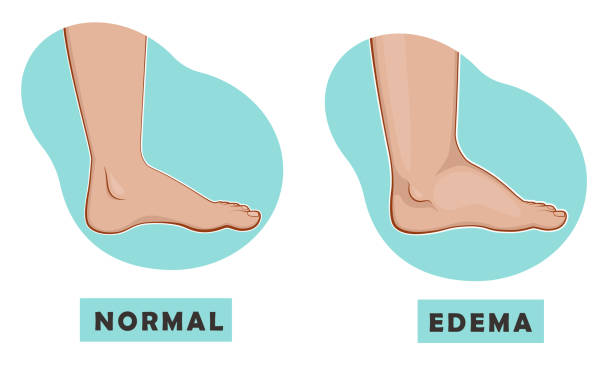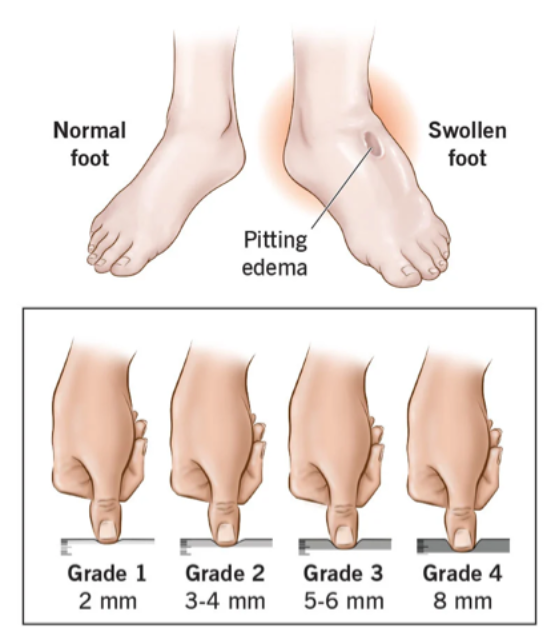What is edema? Why is it so important?
In a healthy adult, nearly all fluid is contained in the intracellular, intravascular, or interstitial spaces, with the intracellular space holding about two-thirds of total body water. Normally, fluid moves freely between these three spaces to maintain fluid balance.
Edema is swelling caused by too much fluid trapped in the intracellular space (within cells). Edema can affect any part of the body, but it’s more likely to show up in the legs and feet.
Medicines and pregnancy can cause edema. It also can be the result of a disease, such as congestive heart failure, kidney disease, venous insufficiency or cirrhosis of the liver. The chronic accumulation of “generalized edema” is due to the onset or exacerbation of chronic systemic conditions.
Monitoring edema helps caregivers and patients to understand the state of the disease as well as the effectiveness of treatments.
Symptoms of edema include:
- Swelling or puffiness of the tissue right under the skin, especially in legs or arms.
- Stretched or shiny skin.
- Skin that holds a dimple, also known as pitting, after it’s been pressed for a few seconds.
- Swelling of the belly, so that it’s bigger than usual.
- Feeling of leg heaviness.

Edema can affect the entire body or only one body part. Systemic edema affects every area in the body, and localized edema affects one area.
Systemic Causes
Systemic conditions that affect the entire body, can cause fluid retention leading to peripheral edema:
- cardiac diseases
- low protein levels
- congestive heart failure
- liver disease
- kidney failure or renal disease
- obesity
- medications
- pregnancy — or premenstrual edema
Localized Causes
Localized edema typically involves one organ or part of the body and is often caused by increased capillary pressure:
- cellulitis
- lipedema
- deep venous thrombosis (DVT) — blood clots, usually in the legs
- lymphedema
- venous insufficiency
- Infections and tumors
Clinical Assessment of Edema
Measuring edema is a vital part of determining the best treatment plan and taking steps to manage symptoms, such as implementing complete decongestive therapy.
Your edema measurement will help determine what kind of treatment plan is right for you, and it will also help you figure out whether your edema is progressing or not.
Standard Clinical Practice
Pitting edema occurs because of a buildup of fluids that causes swelling, usually in the lower body. Edema is called “pitting” when there’s enough swelling to cause a “pit” when pressing on the affected area. Non-pitting edema doesn’t leave a mark and is usually caused by fluids with relatively higher protein and salt content.
The severity of pitting edema is clinically assessed on a scale, based on how deep the pit is and how long it takes to go away.

The doctor may give your pitting edema a grade or measure it. These grades, from 1 to 4, tell you how serious it is. The system is based on how deep the pits are and how long they last after you press the swollen area.
1+: You can barely see the pit.
2+: You see a slight pit. It goes away within 15 seconds.
3+: You see a deeper pit. It takes up to 30 seconds to go away.
4+: The pit is deep and takes more than 30 seconds to go away.
In addition to pitting edema, during a periodic clinical visit, caregivers might manually measure ankle circumference using a tape measure to inspect the changes over time.
This method is considered to be expensive for the healthcare system. It is also not very accurate since various contextual factors such as level of daily activity and the effect of body posture on formation of edema is being overlooked.
Although the formation of edema is a gradual process, it could happen within a few days. Therefore, periodic clinical visits have not been very effective in reducing re-hospitalization rate.
Remote edema monitoring as a complementary method can reduce the burden of clinical visits and also reduce the number of emergency readmission to hospitals.
How is edema being monitored at present?
Although edema is an excellent health indicator, measuring it currently requires a doctor’s visit and is often done with a tape measure or a pitting edema test. Measuring edema continuously could provide more useful information for doctors than periodic measurements.
Weight Scales
Using weight scales at home, caregivers can watch for sudden changes in weight that could be potentially caused by fluid retention. However, studies have shown that this method is not very effective as it has a high rate of false positives, plus patients do not reliably record weight data every day.
Continuous Monitoring
The BodiGuide Edema Monitor is a reliable, accurate, low cost system which can be used to remotely detect health problems in patients allowing for early detection and treatment.